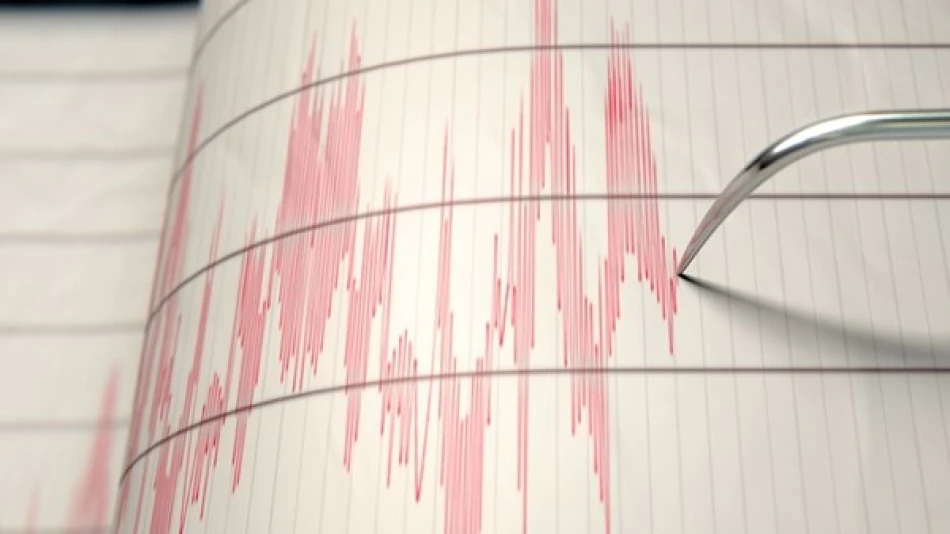
Powerful Earthquake Rattles Naples, Residents Shaken but Unharmed
Naples Earthquake Highlights Italy's Volcanic Vulnerability as Phlegraean Fields Stir
A 4.0 magnitude earthquake struck Naples and surrounding areas on Friday morning, forcing residents into the streets and underscoring the persistent seismic risks facing one of Europe's most densely populated volcanic regions. The tremor, centered in the volatile Phlegraean Fields west of the city, serves as a stark reminder of the geological powder keg beneath southern Italy's economic heartland.
Morning Tremor Sends Residents Fleeing
The earthquake hit at approximately 9:15 AM local time (7:15 GMT), causing widespread alarm among Naples' residents who rushed from their homes as buildings shook across the coastal city. Social media quickly filled with videos and images of the aftermath, with one resident describing the intensity: "Everything was shaking, from the ground to wardrobes and furniture."
The epicenter's location in the Phlegraean Fields—a sprawling volcanic caldera system—adds particular concern to what might otherwise be considered a moderate seismic event. This region, known locally as Campi Flegrei, represents one of Europe's most dangerous volcanic systems, capable of producing catastrophic eruptions that could affect millions.
The Phlegraean Fields: A Sleeping Giant
The Phlegraean Fields have been showing increased activity in recent years, with ground uplift and seismic swarms becoming more frequent. This 13-kilometer-wide volcanic system last erupted in 1538, creating the Monte Nuovo cone, but its potential for destruction extends far beyond typical volcanic threats.
Scientists classify the Phlegraean Fields as a "supervolcano" capable of producing caldera-forming eruptions. The system's last major eruption occurred approximately 39,000 years ago, potentially contributing to the extinction of Neanderthals in Europe. Even moderate volcanic activity here could disrupt air travel across Europe, similar to Iceland's 2010 Eyjafjallajökull eruption but potentially more severe given the region's population density.
Economic and Infrastructure Implications
Friday's earthquake highlights the precarious position of Naples and the broader Campania region, home to over 3 million people. The area serves as a crucial economic hub for southern Italy, with the Port of Naples handling significant Mediterranean trade and the region supporting major industrial activities.
Persistent seismic activity could impact property values, insurance costs, and long-term investment in the region. The Italian government has invested heavily in monitoring systems and emergency preparedness, but the fundamental challenge remains: how to protect a massive population living atop one of the world's most dangerous volcanic systems.
Monitoring and Preparedness Efforts
Italian authorities maintain sophisticated monitoring networks throughout the Phlegraean Fields, tracking ground deformation, gas emissions, and seismic activity. The current earthquake fits within patterns of increased unrest that volcanologists have observed since 2005, when the ground began rising at accelerated rates.
Unlike isolated volcanic systems, the Phlegraean Fields' proximity to Naples creates unique challenges. Evacuation plans must account for dense urban populations, limited transportation infrastructure, and the potential for rapid escalation from seismic activity to volcanic eruption. The region's experience with Mount Vesuvius—which destroyed Pompeii in 79 AD and remains active—provides both historical context and modern preparedness frameworks.
Regional Volcanic Context
Southern Italy sits at the intersection of major tectonic plates, creating a volatile geological environment. The same forces that built the Apennine Mountains continue to generate seismic activity throughout the region. Mount Vesuvius, Mount Etna in Sicily, and Stromboli all remain active, making Italy one of Europe's most volcanically active countries.
Friday's earthquake serves as a reminder that volcanic hazards extend beyond dramatic eruptions to include the persistent seismic activity that accompanies magma movement and ground deformation. For Naples residents, such events represent the ongoing reality of living in one of the world's most beautiful yet geologically dangerous regions.
Most Viewed News

 Layla Al Mansoori
Layla Al Mansoori






